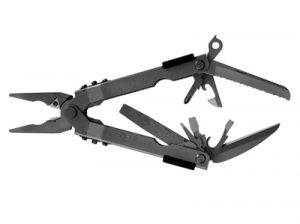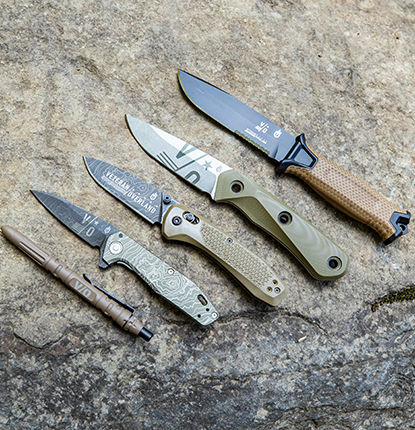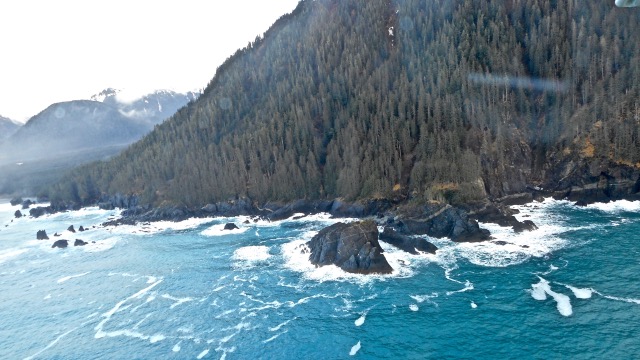
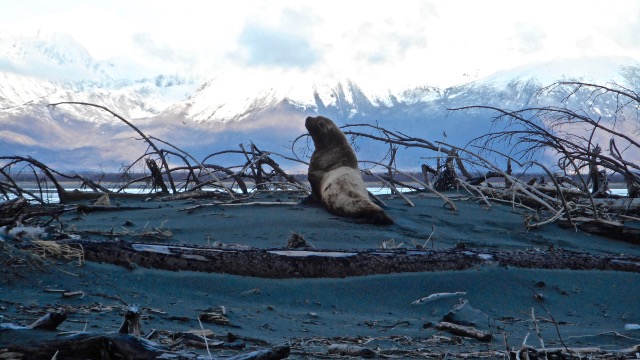
February 15, 2016, in Juneau, Alaska, was a brisk but sunny winter day, so I decided to fly my small bush airplane to the Gulf of Alaska coast, at least 100 miles of my 150-mile-trip over water, to spend the day beachcombing. Landing on tide-packed remote sandy beaches, I searched for antique Japanese glass net floats tossed to Alaska by Pacific waves, buried in sand fifty-plus years, and were finally exposed by winter storms. Timing is critical. This Alaska winter excursion must be done in good weather at low tide in the quickly waning daylight.

As is always the case, I wanted to check one last beach before daylight disappeared and the encroaching tide made landing impossible. As the airplane slowed on rollout, barely missing the steep-cut bank, my left wheel locked up. It wouldn’t turn. It wouldn’t even move. Eyeing the incoming tide and the dark woods beyond the beach, I quickly gathered and stacked driftwood under the fuselage, scooped sand away from around the tire, and inspected the damage. I must have looked like a dog burying a treasure, but this dog was wary of earthquake-driven rogue waves harboring killer whales that might think I’d make a fine seal supper. If orcas didn’t get me, huge coastal brown bear and wolf tracks etched in the sand reminded me that other critters would be ravenous and ill-tempered after a too-short winter hibernation. Yanking the tire which was locked up and had to be removed, I pulled out the only tool I had with me, and I always carry, my trusty blunt-nose, Gerber MP600.
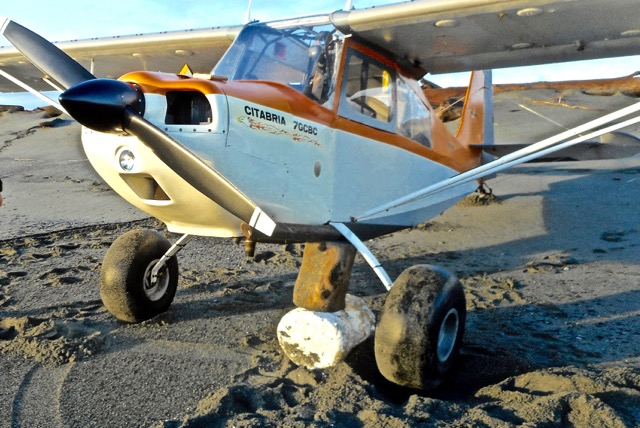
Glancing often in the fading daylight at the dark woods and angry ocean, I worked out the sturdy, one-eighth-inch Carter pin that secured the axle nut with my handy Gerber tool. But in the process, I broke one of the jaws off the multi-pliers. As water inched closer, I may have experienced some stress removing the Carter pin, but the Gerber tool definitely did its job. In fact, I was still able to use it to remove the axle nut. I pulled off the wheel, identified the problem as a broken part in the brake assembly, and removed the part. Of course, that meant I no longer had brakes, but at this point, having no brakes was the least of my worries. I quickly reinstalled the wheel, hopped in the airplane and flew off just as water lapped the tire, erasing wolf and bear tracks and the rest of the beach.
Still fifty miles from the nearest village, in the fading light I found another place to land above the high water mark and spent a wonderful night in the wilderness. After a quick dinner of Spam, potato chips, and hot tea, I crawled into my 30 degrees-below-zero sleeping bag as temperatures dropped into the teens and fell asleep to the haunting howls of a nearby wolf pack.
On the flight home the next afternoon, I flew over the beach from the night before, now washed smooth with driftwood dragged high on the beach and new bear and wolf tracks circumventing the Santori whisky bottles, lawn chairs, floats, and other Pacific plastic litter. If my Gerber tool had not saved the day, my trusty airplane would have floated out to sea, litter for another beach. And some bear would have ingested my Gerber tool, along with me.
And that’s the true story, embellished a bit perhaps, but certainly based on actual events. Just ask the local bears. They know.
Written by Charles and Mary Lou Gerbi





